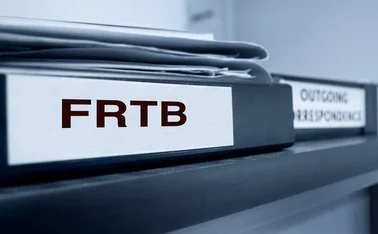FRTB – Special report 2020
Throughout FRTB’s troubled gestation, regulators were warned that making the internal models approach too operationally complex and capital-intensive would mean few outside the biggest banks wanted to use it – with the potentially dire consequence that all mid-sized and even some larger banks would wind up focussing liquidity provision solely on liquid benchmarks – leaving them all exposed to the same risks and underlyings when asset prices collapse.
Many warned at the time that such flaws were a consequence of an aggressive timetable when writing the rules, and would lead to suboptimal outcomes – and so it proved. FRTB’s initial timetable proved unworkably optimistic; it was hived off from the rest of Basel III; then cracked open and rewritten under a new Market Risk Group led by the Bank of England’s Derek Nesbitt, under whom banks report having earned a fairer hearing for their concerns.
Already, the start of the new regime had been pushed back to 2022; with final implementation now delayed to 2023 along with the rest of Basel III as a consequence of Covid, gauging the final impact remains a way off – and even then, its true cost will not become clear till it gets a thorough road-test in the next market meltdown.
Copyright Infopro Digital Limited. All rights reserved.
As outlined in our terms and conditions, https://www.infopro-digital.com/terms-and-conditions/subscriptions/ (point 2.4), printing is limited to a single copy.
If you would like to purchase additional rights please email info@risk.net
Copyright Infopro Digital Limited. All rights reserved.
You may share this content using our article tools. As outlined in our terms and conditions, https://www.infopro-digital.com/terms-and-conditions/subscriptions/ (clause 2.4), an Authorised User may only make one copy of the materials for their own personal use. You must also comply with the restrictions in clause 2.5.
If you would like to purchase additional rights please email info@risk.net
FRTB – Getting the fundamentals in place
Step inside an alternate reality, where FRTB was in force during the Covid crash
EU urged to pass permanent market risk capital relief
Council agrees temporary changes, but ECB’s Enria wants legislators to trust supervisors
Regulators and banks clash on FRTB capital impact study
Basel and EBA call out two banks for using “overly conservative” survey assumptions
EBA relaxes modellability hurdles for market risk capital
Flexibility granted for assessing NMRFs on options, but constraints remain on committed quotes
EU banks seek FRTB delay, citing ‘strain’ of virus
Firms want leeway to fight market mayhem, minus burden of new reporting rules
The open data revolution in banking falls short
Lax Pillar 3 rules are leading to inconsistent data being collected




